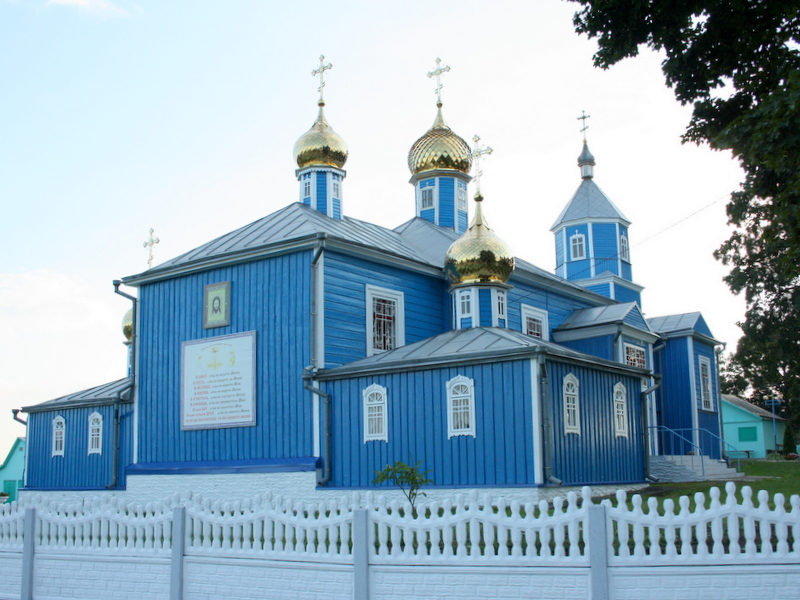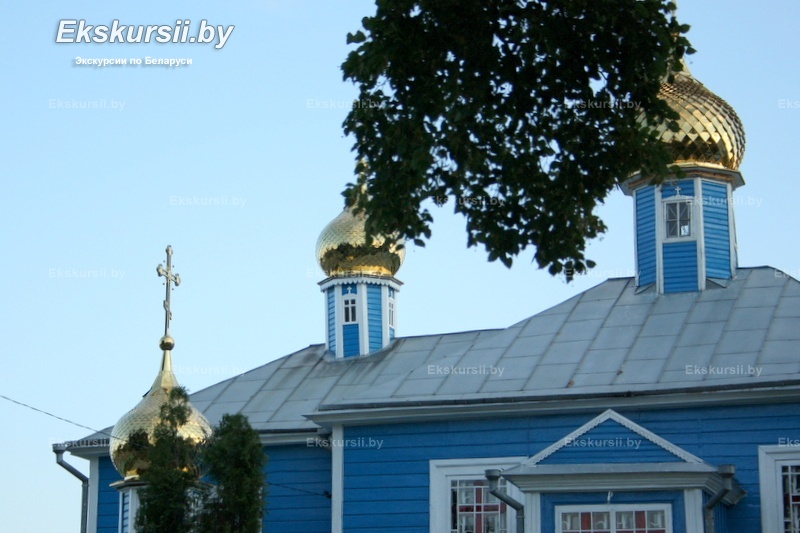History
The first written mention of the church in Kobryn dates back to 1465. Over time, it was known by various names — Petrovskaya, Petropavlovskaya, and even Grinmanovskaya. The temple gained special renown thanks to Alexander Suvorov, who lived nearby and was a regular parishioner. His personal psalter, inscribed with “By this psalter Suvorov sang and read,” is still carefully preserved in the church as a relic. In 1864, the dilapidated building was replaced with a new wooden church designed by architect Vendenbaum. In 1913, the church was moved to a new location — to the cemetery on Pinskaya Street. The grand stone church that was planned as a memorial was never built due to the outbreak of war.
Architecture
The current church building is a wooden structure harmoniously integrated into the surrounding landscape. Its architecture reflects the spirit of the mid-19th century: strict lines, a tall bell tower, and a traditional tripartite layout. The interior stands out for its distinctive artistic style: here you can see icons from the 18th–19th centuries, including a copy of Giovanni Bellini’s famous painting “Madonna and Child,” as well as icons such as “Christ Pantocrator,” “Apostles Peter and Paul,” and a series of depictions of the Passion of Christ. The church has been restored multiple times, but it has retained its authentic atmosphere.
Excursions
The Kobryn Church of Saints Peter and Paul is featured in many tours across Belarus, especially popular among travelers interested in Orthodox history and military glory. It is often included in tours from Minsk and Brest dedicated to the legacy of Suvorov and spiritual heritage. During a visit, guests can learn about the church's role in the commander's life, see his personal belongings, and touch sacred relics. We recommend booking a tour with a visit to this church in advance through our portal — this ensures an engaging program and a professional guide.


